Author: Marshall Schott w/ Atlantic Brew Supply
 Conventional wisdom has it that wort must be boiled for a minimum of 60 minutes, sometimes longer, a purported necessity recent xBmt results have called into question. Shook to some degree by findings demonstrating tasters were unable to reliably distinguish a Pils malt beer boiled for 90 minutes from one boiled for 30 minutes, as well as lab data showing no detectable DMS in either, Tony from Atlantic Brew Supply (ABS) in Raleigh, NC emailed me with some questions and comments. At some point during our discussion, he wondered if perhaps things might have been different had another brand of Pils malt been used, suggesting the possibility the presence of DMS, at least with shorter boils, is a function of the varying barley varieties
Conventional wisdom has it that wort must be boiled for a minimum of 60 minutes, sometimes longer, a purported necessity recent xBmt results have called into question. Shook to some degree by findings demonstrating tasters were unable to reliably distinguish a Pils malt beer boiled for 90 minutes from one boiled for 30 minutes, as well as lab data showing no detectable DMS in either, Tony from Atlantic Brew Supply (ABS) in Raleigh, NC emailed me with some questions and comments. At some point during our discussion, he wondered if perhaps things might have been different had another brand of Pils malt been used, suggesting the possibility the presence of DMS, at least with shorter boils, is a function of the varying barley varieties and malting methods used by different maltsters. It certainly got my gears turning. As lovers of homebrew experimentation and supporters of Brülosophy, a very interesting idea was proposed– ABS would brew two batches at their sister brewery, Raleigh Brewing Company, then present the samples for evaluation to attendees of an upcoming event. I expressed my neurotic expectations for limiting extraneous variables, he assuaged my worries with assurances, agreeing to use our standard data collection methods, and we agreed to give it a shot. Let’s see how things went!
and malting methods used by different maltsters. It certainly got my gears turning. As lovers of homebrew experimentation and supporters of Brülosophy, a very interesting idea was proposed– ABS would brew two batches at their sister brewery, Raleigh Brewing Company, then present the samples for evaluation to attendees of an upcoming event. I expressed my neurotic expectations for limiting extraneous variables, he assuaged my worries with assurances, agreeing to use our standard data collection methods, and we agreed to give it a shot. Let’s see how things went!
| PURPOSE |
To evaluate the differences between two beers made with German Pils malts from different maltsters, Weyermann and Best Malz, where both are boiled for only 30 minutes.
| METHODS |
In order to exemplify any differences between the beers, the brewers settled on a very simple recipe, making an 11 gallon batch with each malt.
Short Boil Malt Comparison Ale
| Batch Size | Boil Time | IBU | SRM | OG | FG | ABV |
| 11 gal | 30 min | 30 | 4 | 1.052/1.053 SG | 1.013 SG | 5.25% |
Fermentables
| Name | Amount | % |
| Weyermann/Best Malz Pilsner | 27.5 lbs | 100 |
Hops
| Name | Amt | Time | Use | Form | Alpha % |
| Magnum | 28 g | 30 min | Boil | Pellet | 12% |
| Saaz | 28 g | 10 min | Boil | Pellet | 3.3% |
| Saaz | 28 g | 0 min | Whirlpool | Pellet | 3.3% |
Yeast
| Name | Lab | Attenuation | Ferm Temp |
| US-05 American Ale | Fermentis | 75% | 65°F |
The batches were brewed consecutively on Raleigh Brewing Company’s 3-vessel fly sparge pilot system. Brew day began with the gathering and milling of both sets of grain, a simple task given the brewing location.
Each batch was mashed for an hour, the sweet wort recirculated throughout before being sparged and collected in the kettle.
The worts then went through a brief 30 minute boil with hop additions added at the same times for each batch.
With the boils complete, the wort was run through a convoluted counterflow chiller directly into sanitized sanke kegs repurposed as fermentors.
Hydrometer measurements revealed a small .001 SG difference between the batches, with the Weyermann clocking in at 1.052 OG while the Best Malz wort was at 1.053 OG. The fermentors were placed in the brewery’s quality assurance lab, which is controlled to 65°F/18°C, and two packs of rehydrated US-05 yeast were pitched into each.
Just over 2 weeks later, the fermentors were moved to a warmer environment where they spent a couple days in order to ensure complete attenuation and clean-up of any undesirable fermentation byproducts. The beers were then cold crashed for 2 days then packaged in corny kegs and force carbonated before being served to tasters.
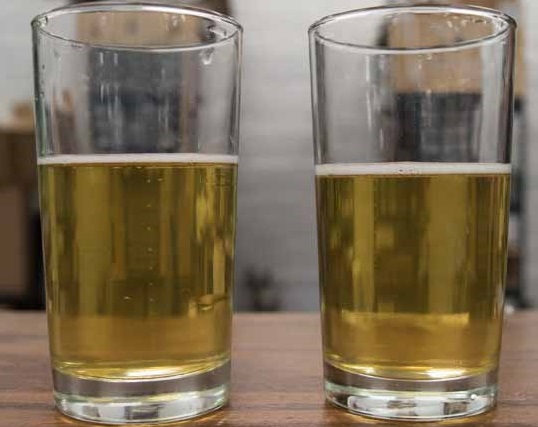
| RESULTS |
All 67 participants completed the evaluation during a Learn To Homebrew Day event held at Atlantic Brew Supply on November 7, 2015. The panel consisted of a mix of BJCP judges, homebrewers, and craft beer enthusiasts.
Each participant, blind to the variable being examined, was served 1 sample of the Weyermann beer and 2 samples of the Best Malz beer then asked to select the one they perceived as being different. With the given sample size, a minimum of 29 tasters (p<0.05) would be required to select the unique sample, though only 20 were capable of doing so, suggesting a participants were unable to distinguish between similar beers produced with either Weyermann or Best Malz German Pils malt.
My Impressions: I didn’t get to taste these beers, so I sought the opinions of those who did.
One ABS employee, Tony, experienced the Weyermann batch as possessing a distinctly more grainy flavor than the BestMalz beer. This, he said, made it more difficult for him to detect any other differences. While he did not attempt the triangle test, and he was fully aware of which was which when he drank them side-by-side. Tony thought he perceived a subtle hint of DMS in both samples with the BestMalz beer having slightly less than the other. But he acknowledged the possibility his perceptions were influenced by his expectations, as his lack of blindness left him looking for very specific characteristics.
Another ABS employee, Darryl, had a similar impression as Tony, perceiving the Weyermann beer as having more of a crackery, grainy quality to it with a slightly denser mouthfeel and a slight hint of DMS. He experienced the Best Malz sample as having the character he’s come to expect from a standard pilsner– clean and smooth with a somewhat lighter mouthfeel where hints of hay, grass, and a general graininess dominated the flavor profile. And, while he thought some DMS may have been present, it was not as strong compared to the Weyermann sample.
All in all, both Tony and Darryl acknowledged the differences were very subtle, as did other ABS employees who casually sampled the beers.
| DISCUSSION |
Since this xBmt was primarily a comparison of 2 different malts with a secondary variable of boil length, and the beers weren’t analyzed in a lab, it’s unreasonable to speak with any certainty about the presence of DMS. Rather, these results appear to show that a beer made from Weyermann German Pils malt is not reliably distinguishable from the same recipe made using Best Malz German Pils malt. It’s possible a superior palate may have noticed a difference in a blind triangle, though I’ve personally used both of these malts extensively and can’t say either stands out as more unique than the other. Totally anecdotal, so interpret cautiously, and try it out for yourself.
In regards to DMS, these results provide support for the notion that a wort produced using a large proportion of Weyermann German Pils malt can be boiled for 30 minutes without imparting a perceptibly different level of DMS than the same beer made with Best Malz Pils malt. Now, assuming ABS’ Best Malz beer was similar to the one I sent in for analysis, it wouldn’t have contained detectable levels of DMS. This being the case, combined with the triangle test data, we can infer the same is true about the beer made with Weyermann malt. Of course, this is an extrapolation, as we’ve no objective data on the presence of DMS in either of these beers.
Coincidentally, Tony from ABS attended the Master Brewers Association of America conference while these beers fermenting and spoke with Franziska Weyermann in person. With the xBmt on his mind, he asked about DMS in relation to malting process and boil length. Ms. Weyermann explained the quantity of SMM, the DMS precursor, can indeed be altered by the malting and kilning process, thus it is paid attention to throughout. The fact it is controllable suggests the possibility it can also fluctuate and, from time to time, might actually result in batches that produce a little more DMS than others due to expected consistency issues. Armed with this knowledge, some might conclude longer boils are simply good insurance against potential off-flavors.
Whether the results from this xBmt hold true for malts produced by other maltsters, or even different varieties between the two focused on here, is something only additional exBEERimentation can determine!
Do you have a favorite malt you swear produces a particularly preferred character and compared it to a similar malt from another maltster? Maybe you’ve been experimenting with different boil lengths? Please share your experiences in the comments section below!
Support Brülosophy In Style!
All designs are available in various colors and sizes on Amazon!
Follow Brülosophy on:
FACEBOOK | TWITTER | INSTAGRAM
| Read More |
18 Ideas to Help Simplify Your Brew Day
7 Considerations for Making Better Homebrew
List of completed exBEERiments
How-to: Harvest yeast from starters
How-to: Make a lager in less than a month
| Good Deals |
Brand New 5 gallon ball lock kegs discounted to $75 at Adventures in Homebrewing
ThermoWorks Super-Fast Pocket Thermometer On Sale for $19 – $10 discount
Sale and Clearance Items at MoreBeer.com
If you enjoy this stuff and feel compelled to support Brulosophy.com, please check out the Support Us page for details on how you can very easily do so. Thanks!

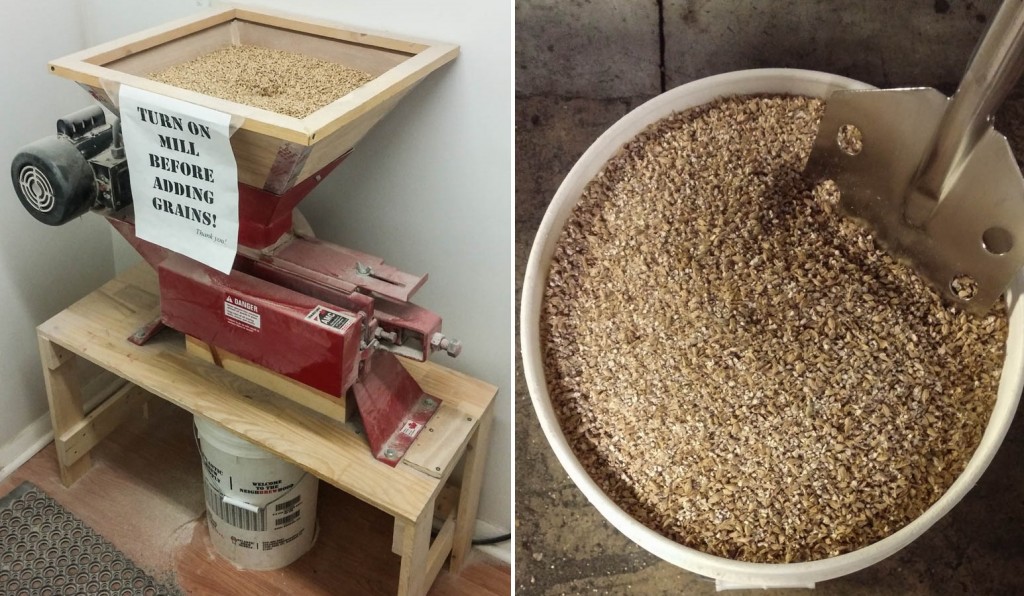
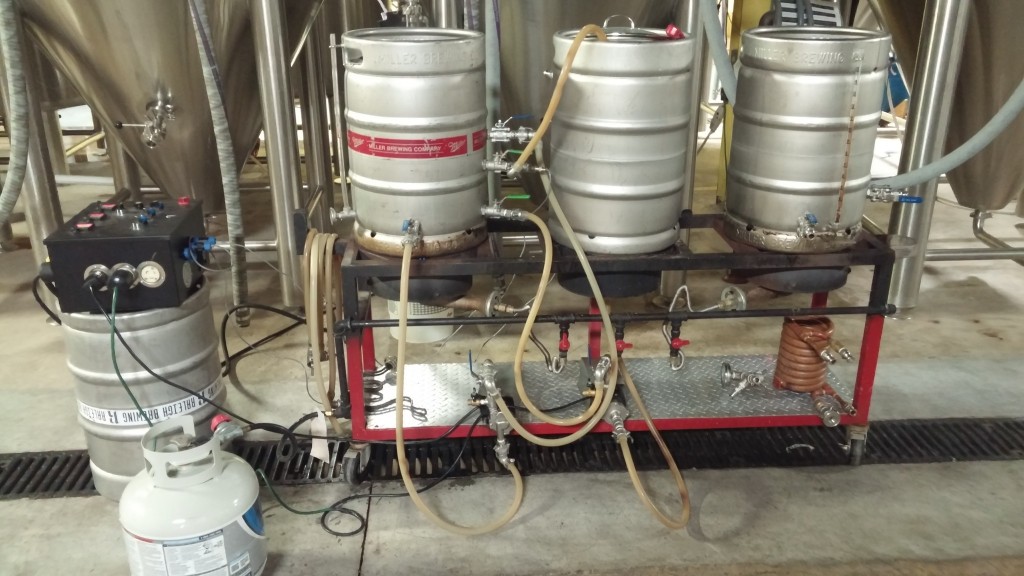
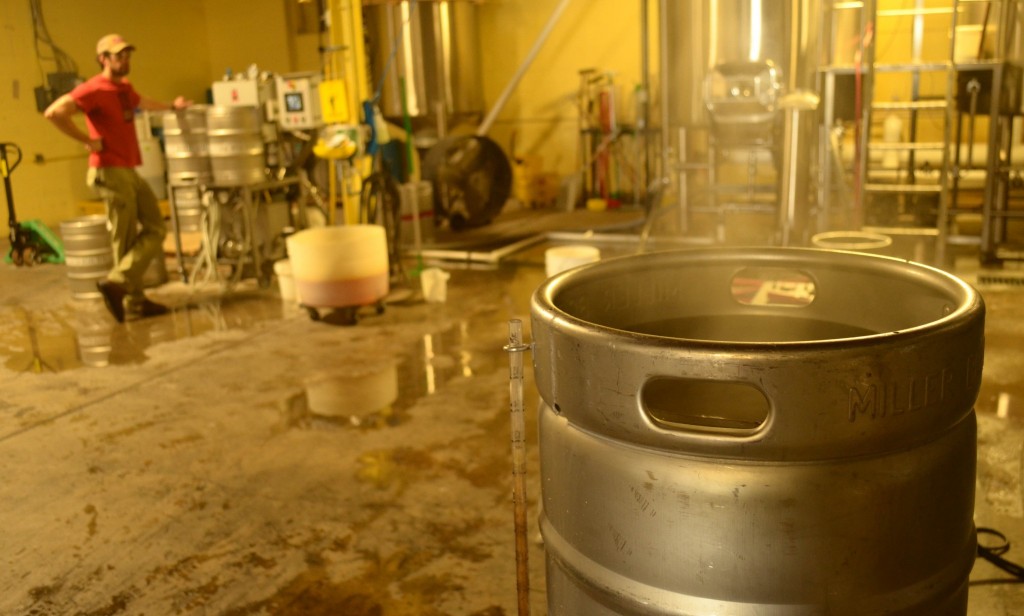
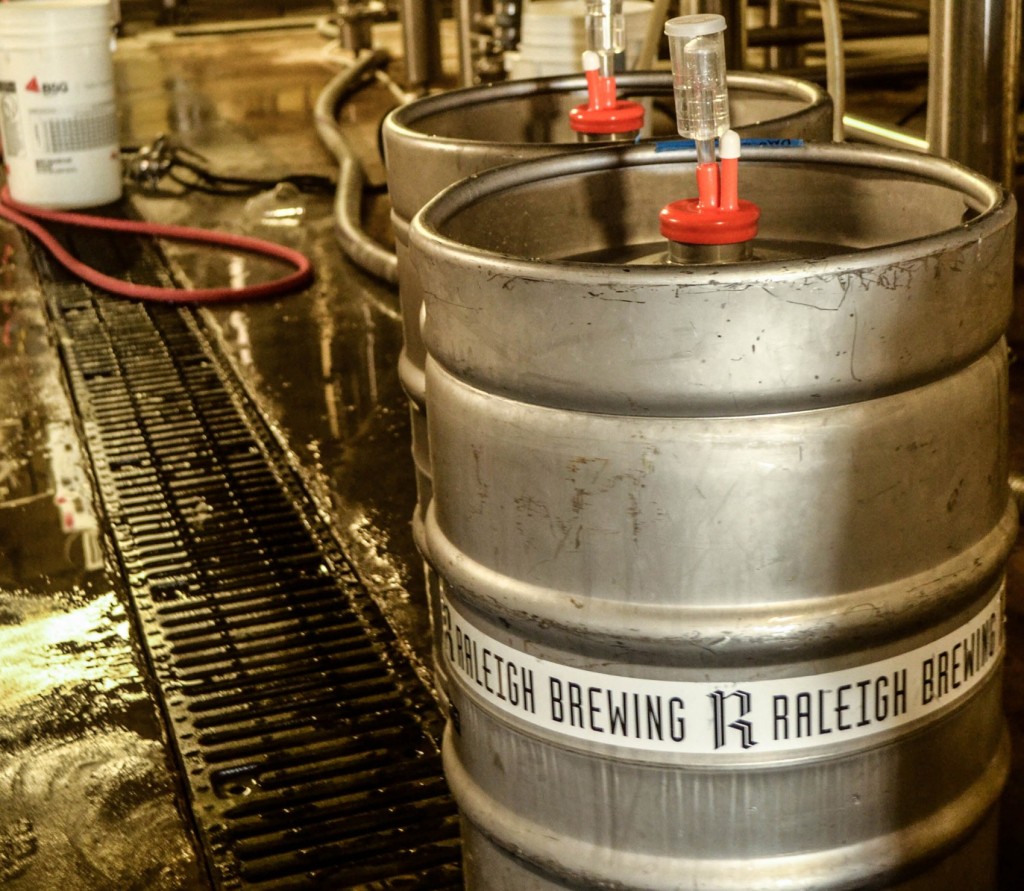
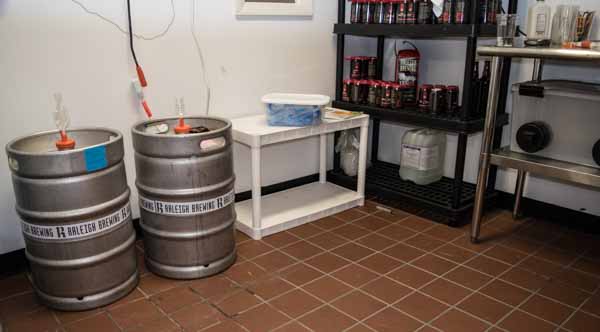
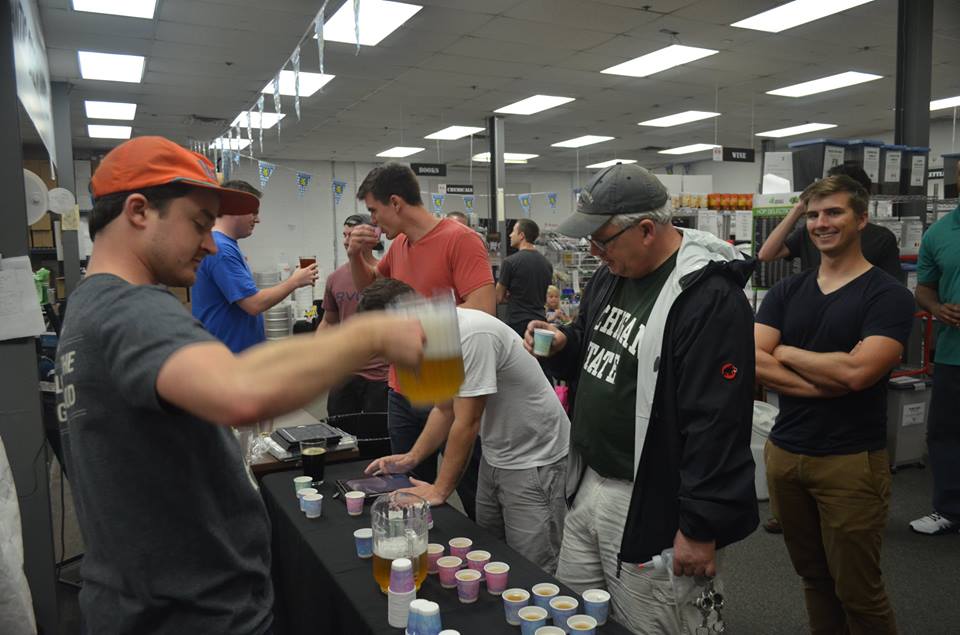










20 thoughts on “exBEERiment | Grain Comparison: Weyermann vs. Best Malz German Pils w/ Reduced Boil In A Pale Lager”
I use Briess Pilsen as my base malt almost exclusively and rarely boil over 60 minutes. I have not detected DMS in my beers and my efficiency is better than with base 2-row. As you said anecdotal but something to think about.
I view it as support for the idea that DMS is something we likely don’t need to worry as much about as we have been.
I also get better efficiency when using Pils malt.
This article in the German Braumagazin actually explains – and supports – rather well the results you’ve been getting: https://braumagazin.de/article/bierfehler-des-quartals-dimethylsulfid-dms/
The chart in there shows how you do not get less DMS when boiling for more than around 20 minutes. You’ve then reached a point where the production of new DMS from the precursor is balanced by the evaporation – and the level in the wort at that point is well below what you are able to taste.
> Ms. Weyermann explained the quantity of SMM, the DMS precursor, can indeed be altered by the malting and kilning process, thus it is paid attention to throughout.
There’s a scientific paper that discusses the relationship of kilning temperature and DMS precursor in great detail: http://onlinelibrary.wiley.com/doi/10.1002/j.2050-0416.1977.tb03799.x/abstract
How much of the wort was boiled off during the 30 minute boil? I’ve heard that boil off percentage is more important than boil duration, but I have no scientific justification for this.
For me, it’s about 0.6 gal.
We actually underestimated and as a result ended up with a lower efficiency than expected. We hit around .4 on each batch.
It’s both. Boil of rate aides in expelling the DMS once formed. Temp exchange and material exchange affects the rate at which SMM is converted to DMS. It has a half life of aprx 38-40 minutes right? (Essay’s in Brewing Science, Bamforth & Lewis).
But if the initial amount is such that the resultant DMS is near or below taste threshold then, as we are theorizing, it may never become an issue.
I believe I linked this to the other short boil article but there it is again. I really like this website.
https://beersensoryscience.wordpress.com/tag/dms/
So it’s increasingly sounding like I should stick with my 60 minute boils solely because: 1. I’ve got my software dialed in for 60 minutes of boil-off and I don’t want to mess with it, and 2. It gives me more time to sit in a lawn chair drinking beer and enjoying the aroma.
Valid reasons in my book!
I noticed that there was a LARGE amount of grain used for an 11 gallon batch, indicating about 56% efficiency. (27.5 pounds for 11 gallons) Is that right?
Yeah, according to Tony, something was up with their mill/crush and they weren’t getting near the efficiency they usually do. Good eye 🙂
Interesting. I should check into this myself. I have this luck, being near kulmbach and Bamberg. I can choose where I get my malt from: Ireks, Zeitler (Monchshof), Weyermann or Bamberger Mälzerei. I did them all. But must say all in all my general impression is that Bamberger Mälzerei gave the best results, unscientificly. I guess I have to run through them once again. But at 50kg a shot it’ll take a while. Price was for me always the only factor.
Thanks for your exBEERiment!!!
Are the amounts of hops correct? I’m sure that you have achieved someting between 17 an 19 IBU. Am I right?
Why do you choose a boil time of 30 min? (DMS problem)
The boil length was part of the point, we were curious to see if DMS might be a function of maltster.
Do you think a short boil with lager yeast could change the outcome? I think lager vs. ale fermentation with the same short boil all Pilsner malt would be interesting.
I’m not convinced either way… meaning I’m curious how a short boil with Pils malt fermented with a traditional lager strain might turn out as well 🙂
I’ve read through the three experiments on boil length. This is extremely interesting and helpful. i had been debating switching base malts to save on time. I really like working with pilsner malt, it works for every style and I’ve been using it for the past 3 years. Fantastic article!
Do you happen to remember what the FG was on both batches? I recently used Best Malz for an Altbier, and the attenuation was way higher than expected. There is also a report on homebrewtalk that Best Malz Pilsen malt attenuates high. I was hoping for another data point. Thanks for all of the experiments!